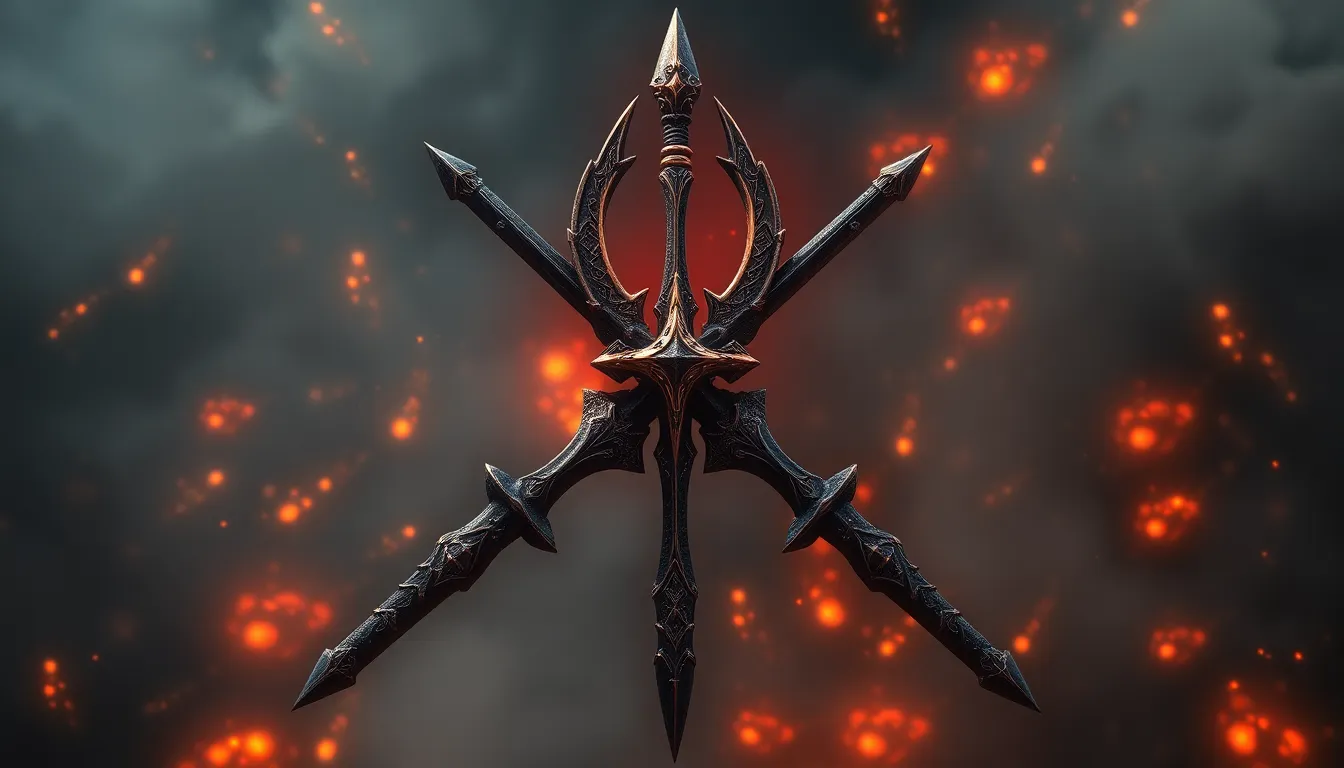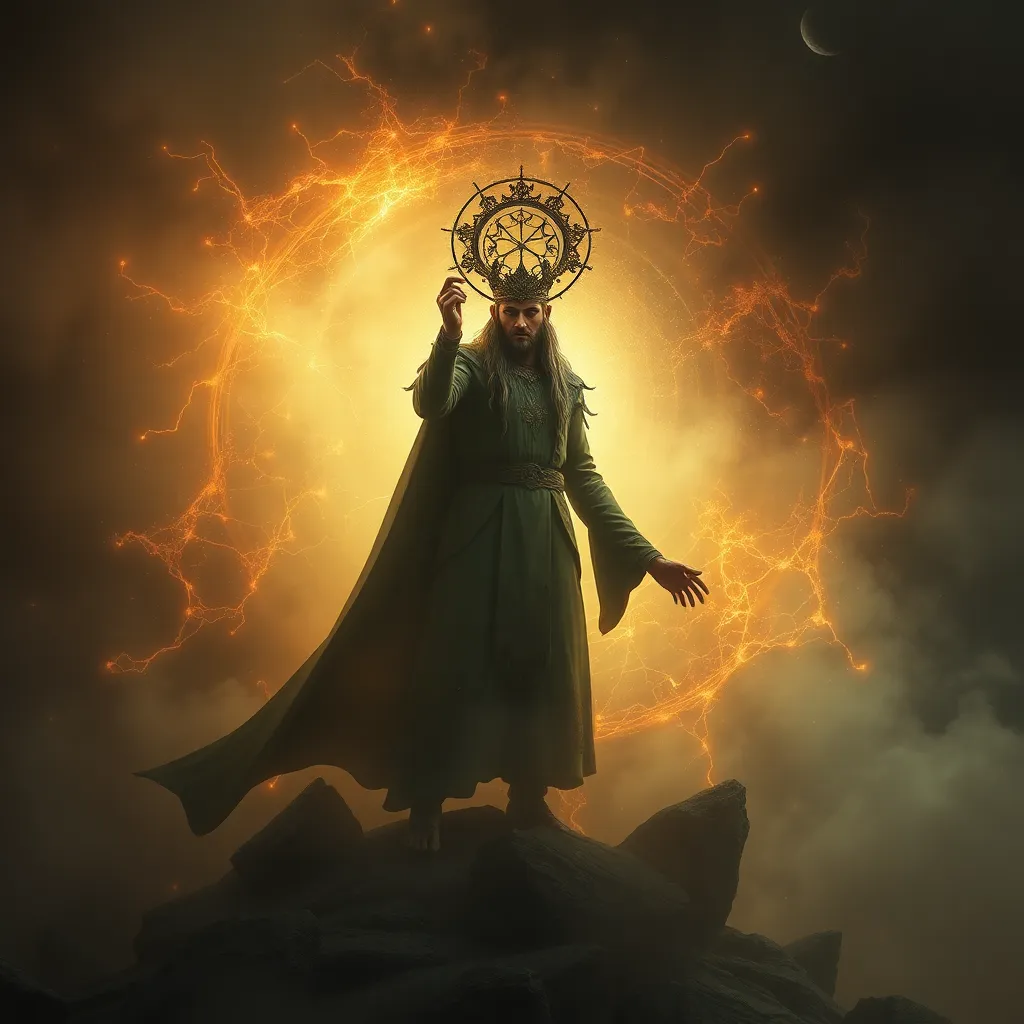Unraveling the Mystique: The Enigmatic Weapons of Ancient Legends
I. Introduction
The world of ancient weapons transcends mere functionality; it encompasses a rich tapestry of mythology and symbolism that has captivated humanity for centuries. These weapons, often imbued with mystical properties, serve as more than tools of war—they represent ideals, power, and the very essence of cultural narratives.
From the legendary swords of heroes to divine hammers wielded by gods, the allure of these artifacts lies in their stories. They embody the aspirations, fears, and values of the civilizations that created them, making them integral to our understanding of history and mythology.
This article aims to explore the fascinating history, symbolism, and cultural impact of some of the most iconic legendary weapons, revealing their importance in shaping human experience.
II. Defining Legendary Weapons
What makes a weapon legendary? Several characteristics set these artifacts apart from ordinary weaponry:
- Mythical Origins: Many legendary weapons are rooted in myths or epic tales, often created by gods or forged with magical properties.
- Symbolic Power: These weapons typically symbolize authority, protection, and the rightful claim to power.
- Unique Craftsmanship: The materials and artistry involved in their creation often elevate them to objects of reverence.
Craftsmanship plays a crucial role in the legendary status of these weapons. Ancient artisans used rare materials, intricate designs, and sometimes even imbued the weapons with magical properties. Across various cultures, examples of legendary weapons abound:
- Excalibur, the sword of King Arthur
- Mjölnir, the hammer of Thor
- The Spear of Destiny, associated with Longinus
- The Bow of Artemis, a tool of the hunt
- Poseidon’s Trident, symbol of control over the seas
III. The Sword of Excalibur: The Legend of King Arthur
Excalibur, perhaps one of the most famous legendary weapons, is steeped in the lore of King Arthur. According to myth, Excalibur was not merely a sword; it was a symbol of divine kingship and the right to rule.
The origins of Excalibur are a blend of myth and history, with various accounts detailing its magical properties and the circumstances of its forging. The sword represents the idea that true power comes from virtue, not just might. In literature, Excalibur has influenced countless tales of heroism and chivalry, becoming a cornerstone of Arthurian legends.
Excalibur’s influence extends beyond ancient texts into modern culture, inspiring films, novels, and even video games. Its enduring legacy serves as a reminder of the ideals of nobility and justice.
IV. Mjölnir: Thor’s Mighty Hammer
In Norse mythology, Mjölnir is the hammer of Thor, the god of thunder. It is said to be an unbreakable weapon that always returns to its owner, representing protection and strength. Mjölnir is not just a tool of destruction; it is also a symbol of fertility, blessing, and the sanctity of marriage.
The hammer’s significance in Norse culture is profound, embodying the fierce spirit of the Viking people. In contemporary media, Mjölnir has gained immense popularity, especially in comic books and films. Marvel’s portrayal of Thor and his hammer has introduced the legend to a new generation, blending ancient mythology with modern storytelling.
V. The Spear of Destiny: A Relic of Power
The Spear of Destiny, also known as the Spear of Longinus, is a relic steeped in historical and religious significance. According to Christian tradition, this is the spear that pierced the side of Christ during his crucifixion, thereby becoming a symbol of divine authority and sacrifice.
The spear’s myths intertwine with various historical narratives, often associated with conquest and power. Throughout history, many leaders have sought to possess the Spear of Destiny, believing it to confer invincibility and divine favor. Its presence in religious and political stories underscores the weapon’s lasting impact on human civilizations.
VI. The Bow of Artemis: A Symbol of Independence
Artemis, the Greek goddess of the hunt, is often depicted with her bow and arrows, representing independence and strength. The Bow of Artemis is more than just a weapon; it symbolizes femininity, autonomy, and the power of women in society.
As a protector of the vulnerable and a fierce hunter, Artemis embodies the duality of nurturing and warrior spirit. Her legacy continues in modern feminist discourse, where she is celebrated as a figure of empowerment. The bow serves as a reminder of women’s strength and the ongoing struggle for equality.
VII. The Trident of Poseidon: Mastery Over the Seas
Poseidon, the Greek god of the sea, wields a trident that symbolizes his dominion over the oceans and the natural forces of the world. The trident represents control, power, and the duality of nature, embodying both creation and destruction.
In mythology, Poseidon’s trident was used to create storms and earthquakes, showcasing the god’s unpredictable nature. The trident’s imagery has permeated art and literature, often depicted as a powerful symbol of authority and mastery over the seas.
VIII. Cultural Variations: Weapons Across the Globe
Legendary weapons are not confined to Western mythology; they exist in various cultures around the world. Some notable examples include:
- Kusanagi: A legendary sword from Japanese mythology, symbolizing the power of the emperor.
- The Sword of Heaven: A divine weapon in Chinese mythology, associated with celestial beings.
- Hades’ Bident: The two-pronged spear wielded by Hades, representing power over the underworld.
These weapons often share universal themes of power, protection, and destiny, reflecting the common human experiences and aspirations across cultures.
IX. The Evolution of Legendary Weapons in Modern Culture
The influence of ancient legends on contemporary storytelling is undeniable. Films, video games, and literature frequently draw upon these powerful symbols to create engaging narratives. The reimagining of legendary weapons allows for a blend of historical significance and modern relevance.
Technology also plays a vital role in this evolution. Advanced graphics and storytelling techniques enable creators to bring these legendary weapons to life in new and exciting ways, making them accessible to contemporary audiences.
The resurgence of interest in mythology and legendary weapons reflects a broader cultural phenomenon, where ancient stories are reinterpreted to address modern themes, such as identity, power, and morality.




